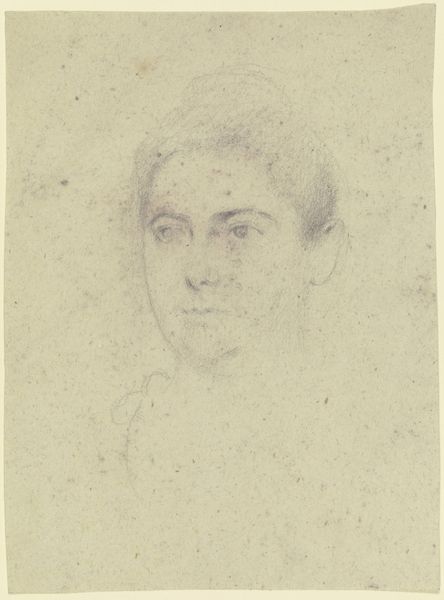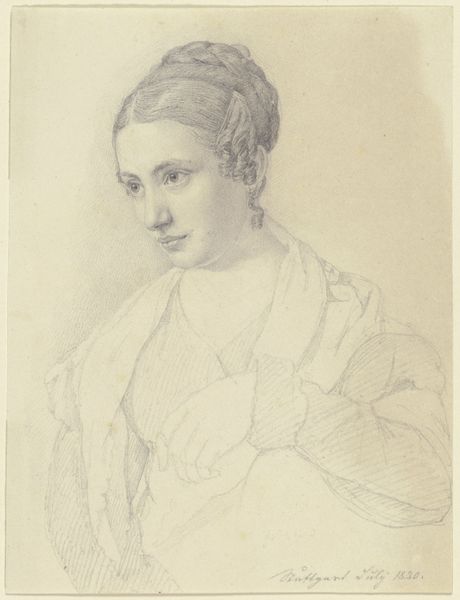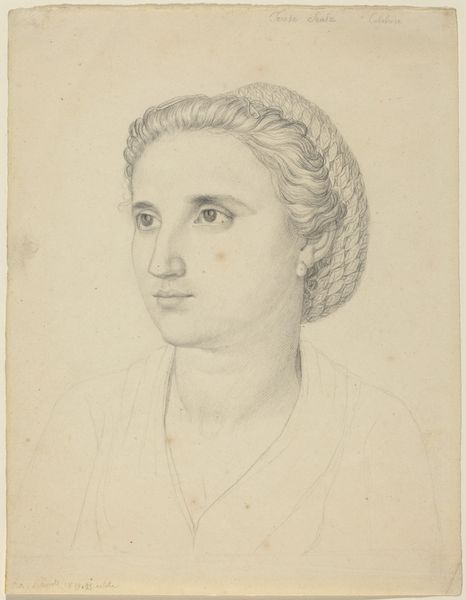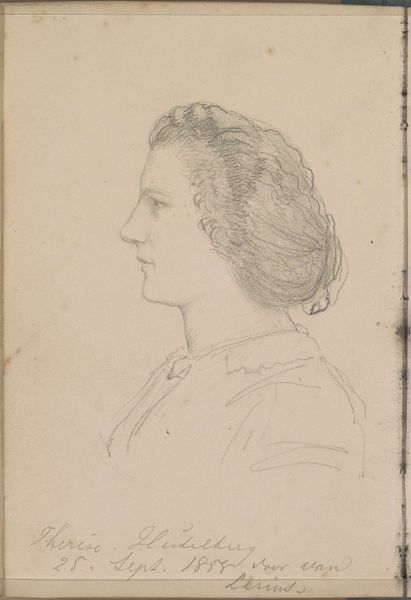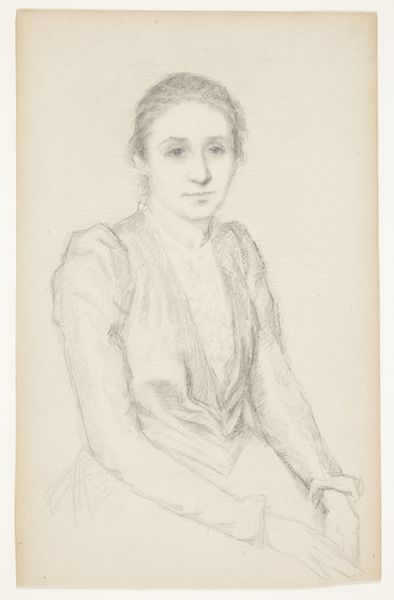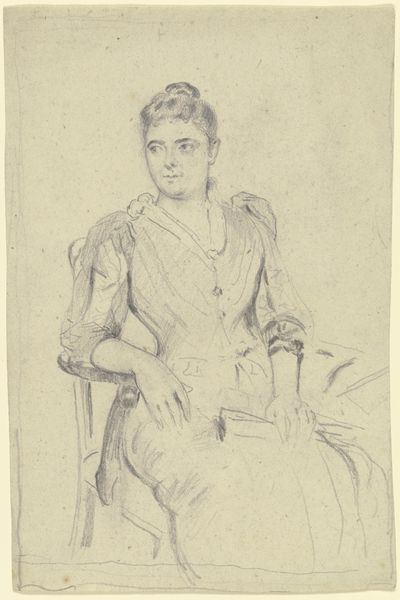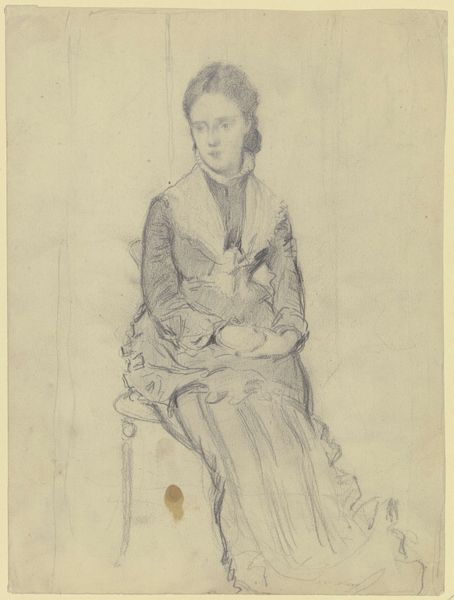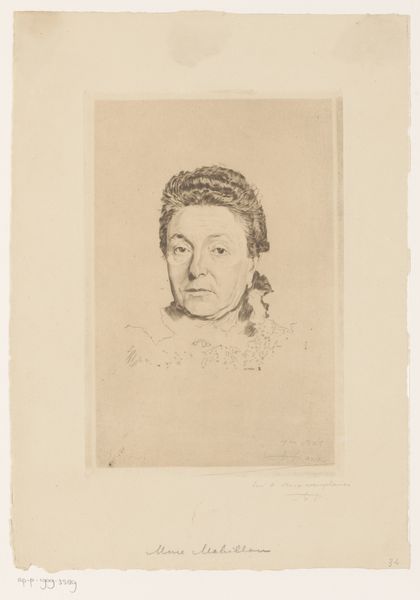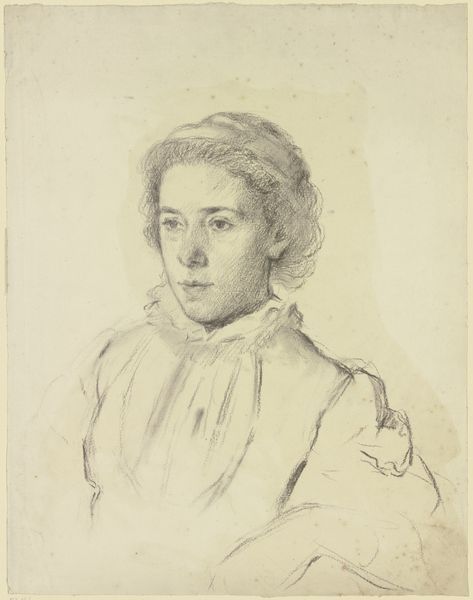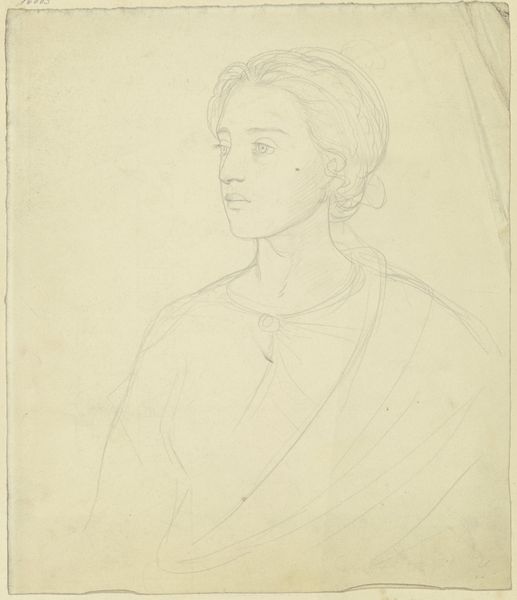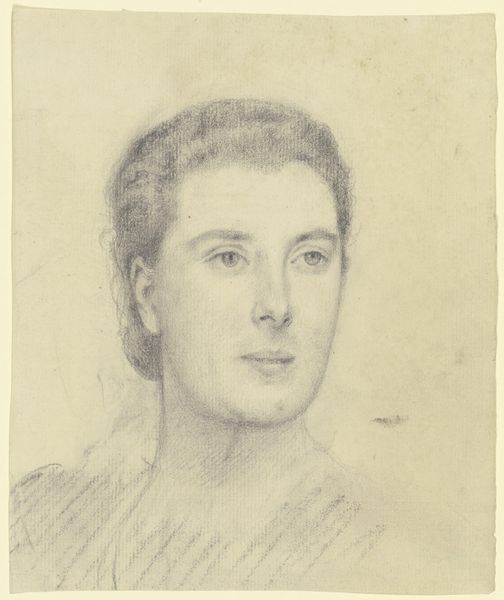
Copyright: Public Domain
Curator: Look at the delicacy in this piece. Here we have Otto Scholderer's "Portrait of Miss Martin" created in 1895. It's a pencil drawing on paper, currently held at the Städel Museum. Editor: My first impression is one of quiet contemplation. The soft pencil lines and the limited tonal range create a subdued, almost melancholic mood. It feels intimate. Curator: It is an intimate glimpse. Scholderer, working in the late 19th century, operated within academic artistic circles. A portrait like this reflects the period's interest in capturing individual likeness but within established conventions of representation. Editor: Exactly, but it's worth considering how those "conventions" often served very particular social functions. Portraits weren't just about likeness; they were about signaling status, reinforcing societal norms. Who was Miss Martin, and how might this portrait have served her or her family's ambitions? Was she ever fully visible? Curator: Sadly, the museum records offer little information about Miss Martin. Nevertheless, consider Scholderer's technique: the delicate rendering of her features versus the sketch-like quality of the background, and how this contrast highlights the sitter's identity and presence, possibly alluding to personal background as well. Editor: Yes, the contrast really emphasizes her face and that's interesting, I am wondering about that choice of background... Does it evoke a sense of unrealized potential? And what does it mean for a woman's identity to be framed so explicitly, within the visual structures controlled almost entirely by male artists? The male gaze, of course. Curator: It brings up relevant issues concerning representation. As a portrait it clearly communicates certain aspirations while simultaneously conforming to social and artistic expectations of the period, yet we also are witnessing here a soft of Impressionistic exploration in the application of his materials. Editor: An unresolved exploration, to my eye. Perhaps her very image suggests how the conventions were starting to give way at the end of the 19th century? It would be good to learn who was in her frame of reference to assess a position more precisely. Curator: Indeed, it inspires future research that can shed light on both the artist and the muse as their histories have been woven through visuality, societal role, and aesthetic innovation. Editor: Absolutely, by interrogating the past we come to an ever better understanding of how visual regimes shape subjectivities today, perhaps even inspiring future activists, artists, and community members.
Comments
No comments
Be the first to comment and join the conversation on the ultimate creative platform.

